Blur Images on iPhone: Techniques and Tips
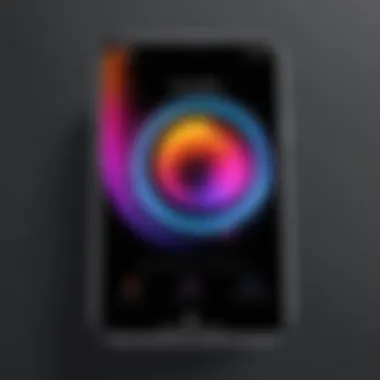
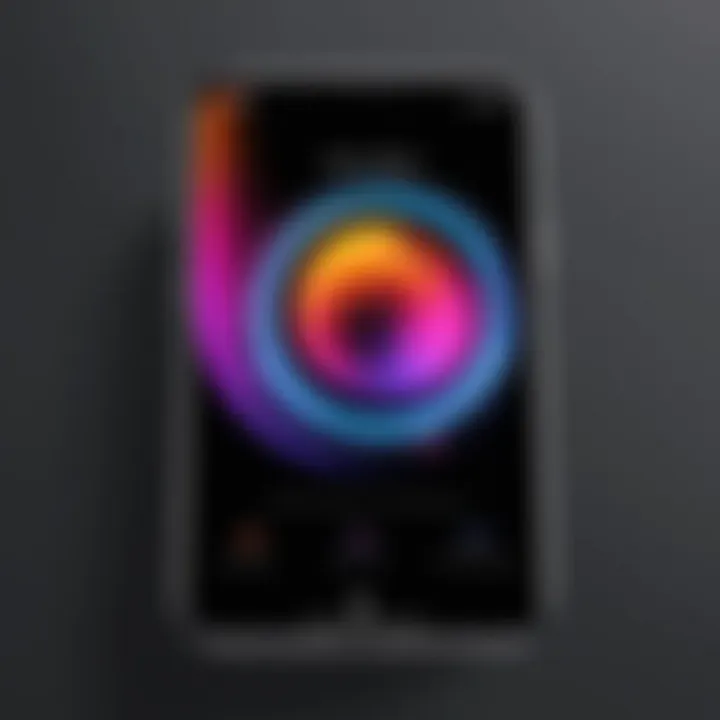
Intro
Blurring an image on an iPhone can dramatically alter its aesthetics. Whether for the purpose of focusing on a subject, creating a sense of depth, or adding an artistic effect, the ability to blur images is a valuable skill for any photographer or casual user. Apple's built-in tools alongside various third-party applications provide multiple avenues for achieving this effect.
In this guide, we will consider the different methods available for blurring an image on your iPhone. The discussion will include the native Photos app, popular editing apps like Snapseed and Afterlight, and some creative techniques to get the best results. By the end, you will have a clear understanding of which methods work best for your particular needs.
Overview of the Technology
Blurring techniques on the iPhone leverage advanced image processing capabilities designed by Apple. Utilizing both hardware and software effectively enhances the functionality available to users.
Key specifications
- Software Integration: The iPhone’s operating system integrates image editing features directly within the Photos app.
- Sensor Quality: Recent iPhone models utilize advanced camera sensors. This captures high-resolution images, ensuring that any edits made, including blurring, retain clarity and depth.
Unique selling points
- Accessibility: Blurring images can be done quickly without the need for complex software or a steep learning curve.
- Flexibility: Users can choose to use built-in options for basic edits or explore full-featured apps for professional outcomes.
Image Editing Methods
1. Using the Photos App
The Photos app offers a straightforward option for blurring images. To blur an image:
- Open the Photos app and select an image.
- Tap on Edit in the top right corner.
- Select Adjust and choose Blur.
- Utilize the slider to control the blur effect.
- Tap Done to save changes.
2. Third-Party Applications
For those seeking more control and customization, third-party apps are available:
- Snapseed: This app provides a specific function to blur via its Lens Blur tool. Users can adjust the intensity and area of the blur.
- Afterlight: It allows for blurring with various artistic filters, offering more creative options.
Tip: Check user reviews and rating before downloading. This ensures that you choose an app that suits your specific needs.
Assessing Advantages and Limitations
Each blurring method has inherent strengths and weaknesses.
- Photos App: It is quick and easy, ideal for casual users. However, it has limited capabilities compared to dedicated editing apps.
- Snapseed: Offers more advanced editing but may require a learning curve for optimal use.
Choosing the right method depends on your specific project requirements. Whether you seek simplicity or depth in editing, understanding the available tools is essential for optimal outcomes.
Epilogue
Preamble
Blurring images is a significant technique in photography and digital imaging. This process can serve multiple purposes, ranging from enhancing privacy to focusing attention on certain elements within a photo. With the increasing use of smartphones, particularly the iPhone, people find themselves needing effective tools for image editing. Understanding how to blur an image effectively can transform everyday photography into impressive artworks.
The iPhone provides users with built-in features that allow for image blurring. However, for those seeking more advanced techniques, numerous third-party applications are available. This article explores these various methods systematically. The aim is to provide a comprehensive guide, beginning with built-in functionalities of the iPhone, followed by an examination of popular external apps.
Additionally, we will analyze the effectiveness and practicality of each method. By highlighting important information, we intend to help users navigate their options, allowing them to select the best strategy based on their individual needs.
As we delve into this topic, it becomes apparent that the benefits of learning these techniques extend beyond mere aesthetics; they enhance the overall skill set in mobile photography. Thus, mastering the art of blurring images not only improves imagery but also provides a deeper understanding of compositional techniques.
Understanding Image Blurring
Image blurring serves various purposes, particularly within the realm of photography and digital imaging. It allows users to alter the visual appearance of images, making it essential in practical applications. While the concept may seem straightforward, the implications of blurring are nuanced. It enhances images for aesthetic pleasure, prioritizes privacy, and guides viewers' focus towards subject elements in a photograph.


Understanding image blurring encompasses its definitions, methods of application, and inherent utilization in numerous scenarios. The use of blurring techniques can transform an ordinary picture into something a bit more appealing or sensitive. For instance, when privacy is a priority, blurring can obscure identifiable faces or objects, ensuring safety and confidentiality. Additionally, blurring effects play an essential role in photography for creative purposes, marking a stark shift in emotional perception of images.
In this guide, we will explore what image blurring is, how it applies in different contexts, and its significance in enhancing visual storytelling.
What is Image Blurring?
Image blurring is a technique that softens the details of an image. This occurs when an image’s pixel information is averaged, resulting in a smooth appearance. The blur can range from subtle to intense, depending on the desired outcome. Various algorithmic methods exist for blurring, including Gaussian blur and motion blur, each serving unique effects.
With smartphones, like the iPhone, built-in software allows for straightforward image manipulation. Users can create blurred areas for artistic or practical reasons without extensive previous knowledge in photography. This democratization of image editing empowers many to communicate creatively and for their own purposes.
Applications of Blurred Images
Privacy Protection
The primary aspect of privacy protection through image blurring lies in the safe masking of sensitive content. This is crucial when sharing images publicly or with a broad audience. By blurring faces, license plates, or other identifiable features, individuals can maintain confidentiality. The key characteristic of this method is its effectiveness in rendering details unrecognizable, making it a beneficial choice for anyone who values privacy in their photos.
Blurred images can ensure that personal information remains private, supporting broader safety measures for individuals. A unique feature of this approach is the ease of use in apps like the Photos app, allowing immediate attention to privacy without needing specialized software or skills. However, one must be cautious not to overdo this effect, which may lead to questions about the intent of modifying an image.
Aesthetic Enhancements
Aesthetic enhancements via image blurring are prevalent in art and design. This technique allows photographers and designers to create visually pleasant images that evoke emotion. It can soften backgrounds or emphasize subjects, drawing the viewer's eye naturally to a focal point. The key characteristic is its versatility, making it a popular method in both casual and professional photography.
The unique feature here is that blurring can alter the mood of an image significantly. It can create a dream-like quality or even convey a narrative. However, there's a risk of over-blurring, which may lead to a loss of important details in an image. This balance is crucial for achieving an appealing result.
Background Focus
Background focus utilizes blurring to isolate subjects from their environments. This technique highlights the main subject, reducing distractions for viewers. The key characteristic is its proficiency in guiding attention where needed. It’s particularly useful in portrait photography, where the individual should be prominent against a softer backdrop.
A significant advantage of this method is clarity in specific areas, enhancing engagement with the main content of the image. Nevertheless, excessive blurring can create a stark contrast that might look unnatural. Fine-tuning is necessary to ensure a balanced image that retains some context of the background while still achieving focus.
Built-in Blurring Features on iPhone
The built-in blurring features available on the iPhone represent an essential part of the device's image editing capabilities. These features allow users to blur images easily, catering to both casual and advanced photography needs. Utilizing these options provides an instant solution for various image adjustments without the need for additional software. The convenience of these built-in features enhances the overall user experience, particularly for those who prefer straightforward editing.
Using the Photos App
Selecting the Image
The first step to blurring an image on an iPhone is selecting the image from the Photos app. This aspect is crucial as it determines what will be edited. Users can browse through their photo library to find the image that best requires the blur effect. This process is user-friendly, characterized by its simplicity and quick access. The advantage of selecting images in the Photos app is that it keeps everything centralized, so users also have access to additional editing features if needed. However, this might limit options if the photo is not already in the library or if users require advanced selections found in third-party apps.
Accessing Editing Tools
After selecting an image, accessing the editing tools is the next logical step. In the Photos app, users tap the edit button, where they can find various options for editing. This part of the process is key because it brings together all tools necessary for modifications, including the blur effect. The editing interface is intuitive, making it popular among users. However, it does have limitations in terms of advanced editing techniques. The tools available cater to basic edits, which may not satisfy those looking for more specific blurring options.
Applying the Blur Effect
Once users are satisfied with their image selection and have accessed the editing tools, applying the blur effect can commence. This action is critical as it directly influences how the image appears after editing. The blur effect in the Photos app allows users to create a soft look, focusing on specific areas while letting others remain sharp. This feature's uniqueness lies in its ease of use, enabling quick changes to the image's overall feel. One potential disadvantage is that users may find the control over the blur effect limited compared to specialized apps that offer more customizable features.
Adjusting Blur Intensity
Adjusting the blur intensity involves modifying the degree of the blur applied to the image. This step plays a significant role in the effectiveness of the blur, ensuring that it looks natural or meets specific aesthetic goals. The Photos app provides sliders to help refine the look of the blur, allowing users to decide how pronounced or subtle they want the effect to be. A key characteristic of this feature is its simplicity and integration into the existing editing tools, making it a popular choice for many. However, this may not offer the fine-tuning options that some advanced users may want in their editing process.
Third-Party Applications for Image Blurring
Third-party applications play a significant role in enhancing the image blurring experience on the iPhone. While built-in features are convenient, these applications often offer a wider range of tools and customization options. Users looking for more advanced blurring options will benefit from exploring these apps. Each app caters to slightly different needs, allowing users to select one that best matches their style and objectives. Additionally, many of these applications provide other editing features that can complement the blurring effect, contributing to a more comprehensive photo editing experience.
Overview of Popular Apps
Snapseed
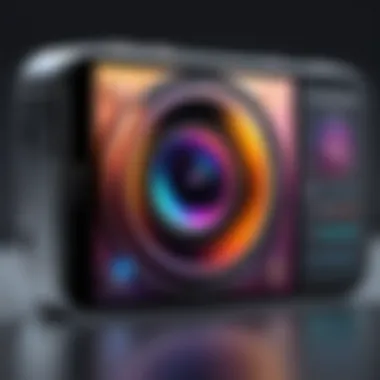
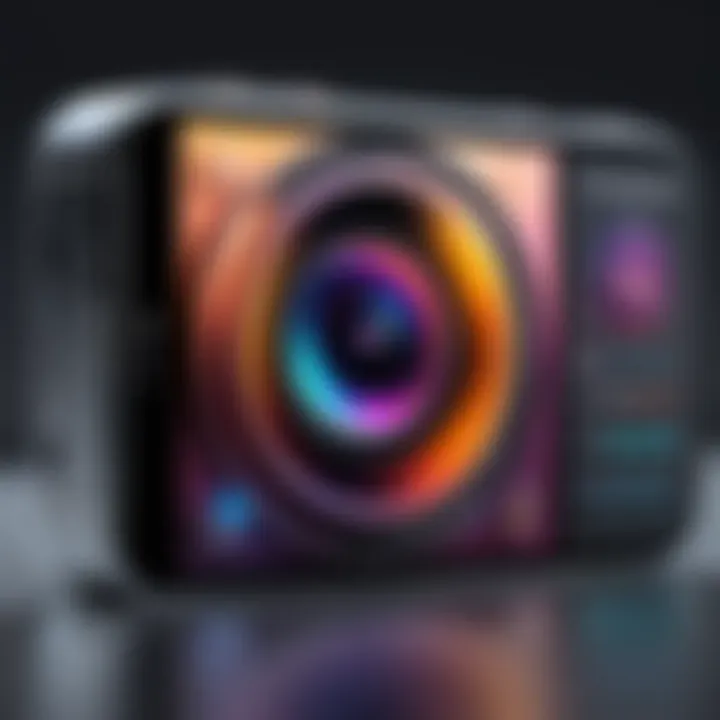
Snapseed is a versatile photo editing app developed by Google. Its image blurring capabilities are prominent, mainly due to the Lens Blur feature. This tool allows users to create a realistic depth-of-field effect. Snapseed is user-friendly, which makes it popular among not only professionals but also casual users. The unique feature of Snapseed is its precise control over the blur intensity and area. However, since the app covers numerous other editing functions, users might feel overwhelmed initially, but the learning curve is generally manageable.
PicsArt
PicsArt stands out for its broad functionality in image editing and enhancement. Its selective blur feature enables users to apply blurriness to specific areas of an image, offering greater creative control. This characteristic makes PicsArt a go-to choice for users who want to emphasize certain elements while softening the rest. The app fuses creativity and ease of use, appealing especially to art enthusiasts. Nevertheless, because of its extensive features, it might take users some time to fully navigate through all options effectively.
Afterlight
Afterlight is known for its simplicity and speed in photo editing. The app includes a variety of filters and textures, alongside its blurring capabilities. The primary advantage of Afterlight is its intuitive interface, allowing quick access to the blur tools without navigating an overwhelming array of options. The standout feature is the blending options, which can enhance how the blur effect integrates with the overall image. A potential drawback is that it may not provide as much customization as other more complex apps, which could limit advanced users looking for detailed control.
Using Snapseed for Blurring
Importing Your Image
Importing your image is the first crucial step before any editing can begin in Snapseed. The user interface allows for straightforward navigation, making it easy to select photos from the device’s library. This seamless integration simplifies the editing process and allows users to start their work without a complicated setup. The quality of the imported image remains intact, providing a reliable canvas for further enhancements.
Utilizing the Lens Blur Tool
The Lens Blur tool is a standout feature in Snapseed. It provides users with the ability to create a visually appealing depth-of-field effect. Users can adjust the blur strength and define which areas to keep in sharp focus. This control makes it ideal for portrait photography where background blurriness enhances the subject's prominence. However, its settings may seem complex for beginners until they get accustomed to the tool’s options.
Fine-tuning the Result
After applying the blur, fine-tuning the result is essential for achieving the desired look. Snapseed allows adjustments to the blur area and intensity, ensuring a natural final outcome. Tweaking these parameters can significantly elevate the overall image quality. The app's ability to return to previous edits without starting over adds to its advantages, although over-editing can sometimes lead to less satisfying results.
Using PicsArt for Advanced Effects
Navigating the Interface
Navigating the interface of PicsArt can be a rewarding yet challenging experience. The dashboard is packed with numerous features, allowing users to access various editing tools quickly. It is designed for seamless interaction, but first-time users might find it a little cluttered. Once users get used to the layout, finding the selective blur option becomes swift, enabling efficient editing.
Applying Selective Blur
The selective blur feature in PicsArt is primarily its strength. This tool allows users to apply a blur effect precisely where they want it. Whether it's highlighting a subject by blurring the background or creating artistic effects, the control it offers is highly beneficial. Such a feature is particularly useful in creating engaging imagery for social media, although using it effectively requires some practice to avoid unnatural outcomes.
Saving and Sharing Edited Images
Once the editing process is complete, saving and sharing edited images is straightforward in PicsArt. This aspect is crucial since sharing is often the final goal for many users. The app facilitates direct uploads to social platforms, making it convenient for quick dissemination. However, one should be mindful of the export settings, as they can affect the image quality when shared online. Users need to confirm settings to ensure their edited works look their best in digital formats.
Comparative Analysis of Methods
In exploring the methods for blurring an image on an iPhone, a comparative analysis is crucial. This section delves into the merits and downsides of built-in features versus third-party applications. Understanding these differences can help users make informed choices based on their needs, skills, and desired outcomes. It allows users to determine which method aligns with their editing goals, whether aiming for ease of use, control, customization, or output quality.
Built-in vs. Third-Party Applications
Ease of Use
The ease of use is a central theme when comparing methods for blurring images. Built-in features found in the iPhone’s Photos app offer a straightforward interface. Users can quickly select an image and apply a blur effect with minimal effort. This simplicity is beneficial for those who may not have extensive photo editing experience. The Photos app typically requires just a few taps to achieve a result.
On the other hand, third-party applications can introduce a learning curve. Apps like Snapseed or PicsArt often come with numerous tools and options, which may be overwhelming for new users. However, this complexity also allows for more advanced functions, appealing to those looking for a deeper editing experience. Thus, while built-in features shine with simplicity, third-party apps offer variety that might be worthwhile for dedicated editors.
Control and Customization
Control and customization are significant factors for users interested in more than just basic effects. Built-in apps provide limited customization options, focusing on efficiency rather than advanced creativity. The tools are conducive to quick edits, yet they may lack the depth longer-term users might desire.
Conversely, third-party applications excel in this area. They frequently feature sliders and advanced settings, enabling users to fine-tune the blur effect to their liking. For instance, Snapseed’s Lens Blur tool allows for targeted adjustments, permitting edits to achieve a specific look. Nevertheless, this level of control comes with a trade-off; the intricacy can deter those seeking simple fixes.
Output Quality
The aspect of output quality significantly affects the choice between built-in and third-party tools. Built-in editing in the Photos app provides satisfactory results for most casual users. However, the quality may not meet professional standards for those aspiring to publish or print images.
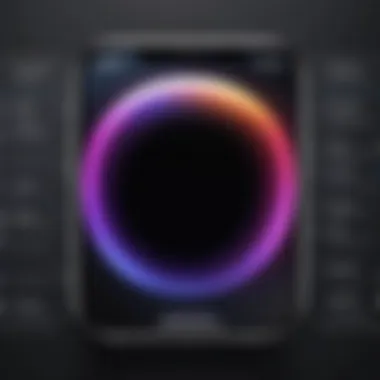
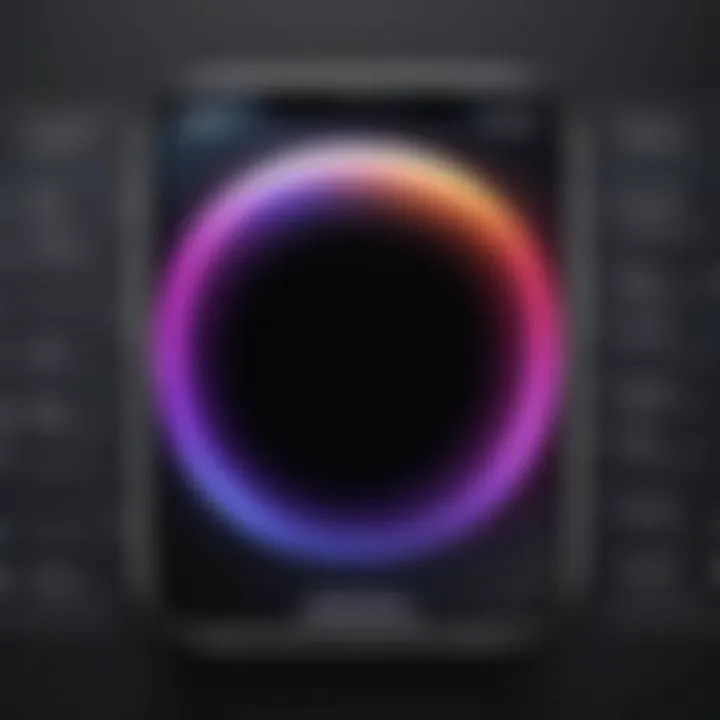
In contrast, many third-party apps strive for higher output quality. Snapseed, for instance, is known for its ability to produce high-resolution images without degrading detail during the editing process. This increased quality, however, can consume more storage space and processing time. Hence, users should assess their requirements carefully, weighing the need for quality against the ease of use and workflow efficiency.
Ultimately, selecting a method relies on balancing ease of use, control, customization, and output quality against personal needs and capabilities.
This comparative analysis underscores the distinct advantages of both categories. Users can now approach their image blurring with a clearer understanding, ensuring a satisfactory editing experience.
Common Challenges and Solutions
Blurring an image on an iPhone can be simple, but challenges may arise. This section aims to identify significant difficulties and their solutions. Handling these challenges is crucial for achieving quality results that match the user's expectations. Addressing issues like making a blurred image appear natural or maintaining the overall quality of the picture ensures that the outcome is aesthetically pleasing. Solutions to these problems are essential to enhance user experience.
Achieving a Natural Look
When one blurs an image, the goal is often to create a pleasing effect while retaining the image's essence. Users frequently struggle with maintaining a natural look in blurred photos. Overdoing the blur can make an image appear unrealistic, reducing its effectiveness.
To achieve a more realistic result, users should consider the following tips:
- Select the right areas to blur: Focusing on specific parts of the image instead of applying a blanket blur helps retain sharp details elsewhere.
- Adjust the blur intensity: Using tools that allow for fine control over the level of blurring can help create a seamless effect.
- Consider depth of field: Mimicking how a camera naturally blurs backgrounds can enhance the realism of the edit. Lens blur features in various apps can assist with this.
Focusing on these aspects contributes significantly to creating a more natural and professionally looking photograph.
Avoiding Over-blurring
One of the primary challenges in photo editing is avoiding the pitfall of over-blurring. Excessive blurring leads to a lack of detail and can compromise the message of the image. Many users may inadvertently apply too much blur, which detracts from the intended visual message.
To prevent over-blurring, it is helpful to:
- Preview the edited image: Regularly toggle between the edited and original versions works wonders. This aids in comparing and assessing the effectiveness of the blur.
- Limit blur to certain parts: Applying blur selectively avoids affecting the entire image, which preserves important visual information and context.
- Use iterative adjustments: Making gradual changes rather than drastic ones helps hit the right balance. Fine-tuning the effect consistently can lead to better outcomes in the long run.
By adhering to these strategies, users can significantly improve their editing techniques and create images that do not suffer from over-blurring issues.
Culmination
In summation, the ability to blur images on an iPhone is not just a trivial feature, but a profound tool that enhances both the functional and aesthetic quality of photographs. Users can effectively control the visual narrative of their images, offering a way to hide unnecessary details or draw attention to focal points.
This article provides extensive insights into various methods for achieving desired blurring effects. From using the native Photos app to exploring third-party applications like Snapseed and PicsArt, each method opens up different levels of customization, control, and ease of use.
Understanding which method suits one's needs can greatly enhance the image editing experience. Built-in tools may appeal for their simplicity, while third-party apps can provide the advanced controls needed for intricate projects. As each tool presents unique advantages, users should consider their specific requirements, such as the intended use of the image and the desired effect.
Furthermore, common challenges like achieving a natural blur or avoiding over-blurring underline the importance of technique and practice. As users engage more with these tools, their skills develop, allowing for greater artistic expression in their photography.
To make the most of these tools, users should familiarize themselves with both the capabilities and limitations of each method. With practice, anyone can master the art of blurring images, resulting in stunning visuals that are both compelling and meaningful.
Finally, the resources highlighted throughout the article provide a solid foundation for anyone eager to explore further. Embracing these methods can turn a simple photo into a remarkable piece of art.
Further Resources
Understanding the options available for blurring images on an iPhone requires access to comprehensive resources. This section emphasizes the importance of finding further resources that can enhance your image editing skills and improve the quality of your output. Access to the right information is key for both beginners and seasoned editors alike. The right tools and tutorials can significantly affect results, enabling you to apply blurring techniques with precision.
Recommended Apps for Photo Editing
In today’s digital landscape, where images play a crucial role, selecting the right app can make a notable difference. Here are a few noteworthy apps that are recognized for their photo editing capabilities:
- Snapseed: This app offers robust features for both beginners and advanced users. Not only does it provide an intuitive interface, but also various editing tools, including multiple blurring options.
- PicsArt: Known for its versatility, this app provides extensive tools beyond just blurring. It allows for creative collaging and overlays, along with specialized blurring features.
- Afterlight: Aimed at users who love to customize their images, Afterlight nurtures creativity with its wide array of filters and blending modes, including surface blurs.
Opportunities for experimenting with these apps are plentiful. Each app comes with unique advantages, thus exploring them provides insight into what works best for your editing style.
Online Tutorials for Advanced Techniques
As one delves deeper into image editing, online tutorials can be invaluable. Learning from seasoned professionals through video or written guides can provide clarity on complex techniques. Tutorials also offer visual examples, making it easier to grasp the finer points of blurring.
Consider the following platforms and resources:
- YouTube: Channels dedicated to photography and editing often feature step-by-step guides. This helps in visualizing the processes discussed in this article.
- Skillshare: Here, you can enroll in courses focusing on advanced techniques in photo editing. Expert instructors guide learners through detailed lessons, ensuring a profound understanding of various tools and methods.
- Reddit Communities: Engaging with communities such as r/photography can yield valuable insights. Users often share their experiences and tips, creating a collaborative environment for learning.
Emphasizing further resources not only prepares you but empowers you with skills that will enhance your editing repertoire. With the right information, each user can elevate their image manipulation capabilities, ensuring each project meets high standards.







